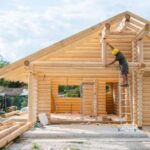Key Takeaways:
- Urban living offers convenience, a vibrant culture, and strong communities.
- The trend toward downtown living is driven by lifestyle preferences and economic factors.
- Access to amenities and transportation hubs are key attractions.
- Sustainability and eco-friendly development are reshaping modern cities.
A Modern Urban Renaissance
In recent years, cities worldwide have experienced a revitalization in their downtown areas. Fueled by innovative urban planning and a growing interest in city living, this renaissance offers a unique blend of excitement and opportunity. Mixed-use development is central to this trend, encouraging a blend of residential, commercial, and cultural experiences. Cities worldwide are strategically redeveloping these areas to foster vibrant and inclusive communities.
Where the downtown area has become a bustling hub of activity and culture, the growing interest in Downtown Austin homes for sale reflects this trend. With a reputation for its music festivals, culinary delights, and tech-driven economy, Austin embodies the allure of modern urban living. Cities embracing similar transformations offer unmatched access to amenities while fostering a sense of community that appeals to various demographics. These urban centers attract young professionals and retirees looking for vibrant, walkable neighborhoods. As more people prioritize lifestyle and convenience, the demand for homes in these dynamic downtown areas continues to grow.
Lifestyle Benefits of Living Downtown
Living downtown provides a lifestyle defined by accessibility, excitement, and innovation. City dwellers benefit from immediate access to key amenities. Desirable locales offer everything from quaint coffee shops to essential services, ensuring residents need not venture far for daily necessities. This closeness fosters a deep connection to the neighborhood and its unique character.
Moreover, the vibrant atmosphere of urban centers offers countless activities. From art walks to impromptu street performances, there’s always something engaging happening right outside the doorstep. The dynamic environment nurtures a sense of perpetual discovery, immersing residents in a diverse and continually stimulating lifestyle.
Economic Factors Driving the Shift
The economic benefits of downtown living are compelling. With remote work becoming the norm, urban areas have adapted quickly, providing affordable spaces that attract a workforce seeking professional and personal balance. According to Forbes, downtown areas are more cost-effective and host many job opportunities.
Urban locales have positioned themselves as incubators of innovation, fostering environments where startups thrive alongside established corporations. This proximity to work, coupled with the benefits of reduced commute time and transportation costs, underscores the economic viability of city living. It presents a unique opportunity for professionals and entrepreneurs to live, work, and play within the same community, creating a seamless blend of work- life integration.
Environmental Considerations and Sustainability
As urban development progresses, sustainability has become integral to the conversation. Cities are in charge of implementing green initiatives, prioritizing eco-friendly practices, and significantly reducing carbon emissions. This effort aligns with global climate goals, fostering environments where the planet and its residents prosper.
Green initiatives often include expanding green spaces, promoting public transportation, and investing in renewable energy solutions. Urban centers implementing these measures successfully appeal to individuals who prioritize an environmentally conscious lifestyle. The shift toward sustainability not only aids in climate change mitigation but also enhances the quality of life in urban settings, creating healthier environments.
Urban Convenience at Your Doorstep
Convenience is perhaps the most tangible benefit of urban living. With excellent public transportation networks, comprehensive bike paths, and pedestrian-friendly streets, residents find navigating their city both practical and rewarding. This infrastructure reduces reliance on personal vehicles, promoting a lower carbon footprint lifestyle.
Efficient public transportation links, such as light rail and bus systems, make commuting easy and affordable. Additionally, cities often feature bike-sharing programs and ample walking paths, encouraging healthy and sustainable transport options. These conveniences place everything residents need within easy reach, making urban living attractive for those seeking to maximize their time and efficiency.
Cultural Pulse: Arts, Entertainment, and Dining
Downtown areas are often cultural epicenters, offering rich, diverse arts, entertainment, and dining experiences. From world-class performances in historic theaters to up-and-coming artists showcasing in modern galleries, there’s no shortage of cultural involvement.
The culinary scene in many urban centers is particularly vibrant. A tapestry of dining options ranges from street food stalls to fine dining restaurants, often featuring cuisines worldwide. This culinary diversity reflects the dynamic nature of city populations, ensuring that every meal is an opportunity for a unique experience. Arts and cultural festivals further enrich downtown living, allowing residents to regularly engage with varied traditions and creative expressions.
The Social Dynamics of Downtown Living
The social fabric of downtown living encourages active community engagement. Thanks to the closely knit urban environment, residents often find themselves naturally entangled in social networks. Local events and activities provide a platform for interaction, fostering connections among neighbors. This engagement creates a robust community and offers a sense of belonging, enhancing overall well-being. According to Wiley, increased neighborhood identification and participation can significantly boost psychological resilience and life satisfaction. With regular neighborhood meetings, resident-led initiatives, and communal spaces, urban living offers a platform to forge meaningful bonds that enrich the lives of those who call the city home.
Future Trends in Urban Living
The future of urban living is poised for exciting advancements, driven by the growth of smart cities and technological integration. Cities increasingly adopt technologies that enhance infrastructure, improve efficiency, and provide real-time solutions to everyday urban challenges.
Smart city initiatives include connecting urban components to the Internet of Things (IoT), where data collected from sensors and devices helps optimize operations, from traffic management to energy consumption. As urban settings evolve with these innovations, they promise to create environments that are not only more livable but also adaptable to the changing needs of their residents.






